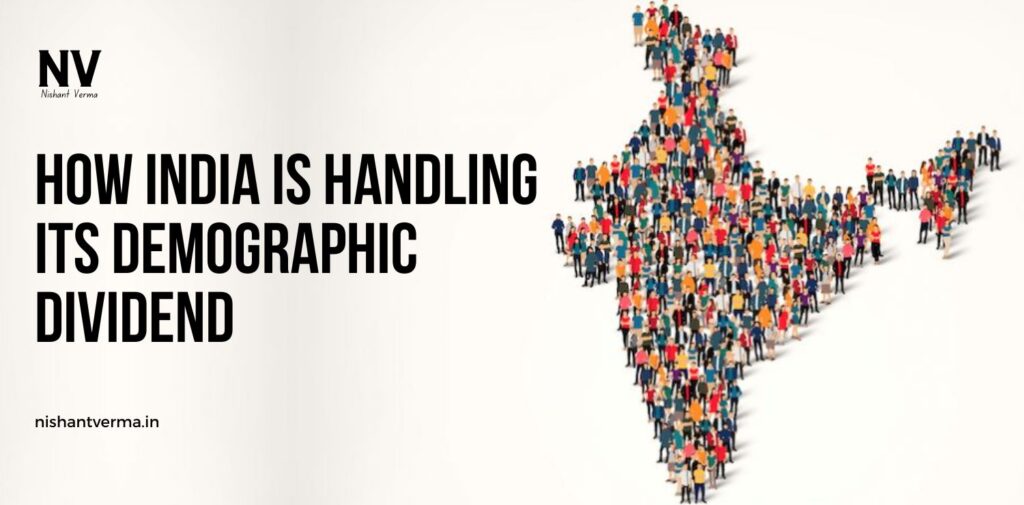India is often described as a country that is sitting on a “demographic dividend.” But what exactly does this mean, and how is India taking advantage of this opportunity? A demographic dividend refers to a period when a country’s working-age population is larger than the dependent population (children and elderly). India, with its youthful population, has a unique opportunity to harness this advantage and fuel economic growth. But to turn this potential into reality, proper strategies and policies need to be in place.
In this article, we’ll explore how India is handling its demographic dividend, focusing on the steps being taken in Hisar and other parts of the country to harness the power of a young workforce.
Understanding India’s Demographic Dividend
India is home to one of the largest young populations in the world. The working-age population (15 to 64 years) in India makes up more than 65% of the total population. This creates an immense opportunity for economic growth, as there are more people available to work, innovate, and contribute to various industries.
However, a demographic dividend is not automatic. It requires investment in education, healthcare, and skill development, alongside the creation of jobs to fully leverage this advantage. If the working-age population is well-equipped with the right skills and opportunities, the economic growth potential can be massive.
Steps Being Taken to Improve Education and Skill Development
One of the first steps in handling the demographic dividend is ensuring that the youth are educated and skilled. India has made significant strides in improving access to education. In cities like Hisar, the focus has been on strengthening the education system and providing young people with the necessary tools to excel in today’s competitive world.
The government of India, along with local authorities in Hisar, is actively promoting initiatives to improve both primary and higher education. Schools, colleges, and universities are working towards creating a curriculum that equips students with practical skills that can directly be applied to industries like technology, healthcare, and engineering.
Moreover, skill development programs have become a priority. The Indian government launched the Skill India mission, which aims to train millions of youth in various trades and technical fields. In Hisar, vocational training institutes and online learning platforms have been gaining popularity, providing a wide range of courses in areas like digital marketing, coding, electronics, and more. These initiatives aim to bridge the gap between the skills taught in schools and the actual skills needed in the job market.

Promoting Entrepreneurship and Startups
In addition to improving education and skills, fostering entrepreneurship is another key strategy for leveraging India’s demographic dividend. The government and private institutions in Hisar have been providing support for young entrepreneurs by offering training, financial support, and access to networks.
The Startup India initiative, launched by the Indian government, encourages youth to start their own businesses by providing them with incentives like tax exemptions, easier compliance regulations, and funding options. Young people in Hisar, like elsewhere in India, are increasingly looking towards entrepreneurship as a viable career option, and many are setting up small businesses in technology, manufacturing, and services.
By nurturing entrepreneurship, India can create more job opportunities and reduce the unemployment rate, allowing the demographic dividend to contribute positively to economic growth.
Investing in Healthcare for a Healthy Workforce
A healthy population is a productive one. To fully harness the potential of its working-age population, India is investing heavily in improving healthcare. In cities like Hisar, access to better healthcare services has been a priority in the last few years. The local government has been working to improve healthcare facilities, which include more advanced medical centers, affordable healthcare options, and better access to treatment in rural areas.
The Ayushman Bharat scheme is a significant step towards ensuring healthcare for all, including the economically weaker sections of society. A healthy youth population will be able to work productively for longer periods, contributing to national economic growth.

Creating Job Opportunities and Reducing Unemployment
While India has a large working-age population, a crucial challenge is the availability of quality jobs. It’s not enough to have a large workforce; there must be jobs for them. Over the past few years, the government has been focused on creating more job opportunities across sectors like manufacturing, services, and technology. In Hisar, the government and private companies have been working to set up new industries that can employ a significant portion of the youth.
One such initiative is the Make in India campaign, which encourages local production and manufacturing. The goal is to increase job creation in India by boosting the manufacturing sector. Hisar, being a key part of Haryana’s industrial landscape, is witnessing growth in sectors like agriculture, textiles, and machinery. Local industries are collaborating with educational institutions to train young people in industry-specific skills, making them job-ready.
Additionally, startups and small businesses are being encouraged to hire young, skilled workers, providing them with stable job opportunities. The focus on entrepreneurship also creates job opportunities in both urban and rural areas.
Ensuring Gender Equality and Inclusive Growth
A critical aspect of India’s demographic dividend is ensuring that both men and women have equal opportunities. In the past, gender inequality has been a barrier for many women to enter the workforce. However, this is gradually changing.
In Hisar and many other parts of India, women are increasingly becoming part of the workforce, with many being trained in various skill development programs. The government has introduced policies that encourage the employment of women in various sectors. This includes better maternity leave policies, equal pay initiatives, and skill programs specifically aimed at empowering women.
By ensuring gender equality, India can significantly increase its workforce and accelerate economic growth, as both men and women contribute their skills and talents to the economy.
The Role of Technology in Shaping the Future
As the world moves towards digitization, India’s youth must be equipped with the right technology skills. In Hisar, there has been a growing emphasis on integrating technology into education and skill training. With the rise of the internet and smartphones, access to online courses and digital platforms has become easier, allowing students and young professionals to learn new skills from the comfort of their homes.
Technology is also creating new job opportunities in fields like IT, software development, and digital marketing. The government has recognized the importance of technological skills and is implementing programs to ensure that the youth are well-prepared for the future job market.

Conclusion: How India Is Handling Its Demographic Dividend
India’s demographic dividend presents a huge opportunity, but it’s up to the government, educational institutions, and local communities like Hisar to make the most of it. By focusing on education, skill development, healthcare, job creation, and gender equality, India can turn its large working-age population into a powerful force for economic growth.
As India continues to invest in these areas, it can ensure that the youth of today become the leaders of tomorrow, capable of driving the country toward a brighter, more prosperous future. The ongoing efforts in places like Hisar are just a small part of a larger movement towards realizing India’s demographic potential.




